This blog post is a step-by-step process on how to make banku at home with just TWO ingredients — corn and cassava.
What is Banku?
Banku is a fermented swallow from Ghana consisting of fermented cornmeal mixed with cassava (the cassava may or may not be fermented) that is cooked into a ball. The ball is then used to eat, most famously, okro soup, but is also consumed with fresh pepper as well as palm nut soup. If you are familiar with sourdough, banku has a similar smell and taste but with a softer and luscious mouthfeel.
What Ghanaians mostly identify as Banku is specifically from the Ga-Adangbe region of southern Ghana. However, it is also traditionally eaten by the Ewe people of Ghana who call it amokple and made with a slight variation. For more details on the variations, please check my blog post on Ghanaian food (click here). Now it is a popular food consumed across the country.
Why you need to try Banku?
- Diversity! When people talk about West African food, they either mention fufu or jollof rice. We have a variety of starchy balls we consume across the region and banku is quite simple to make.
- It is healthier! Fermenting can enhance the nutrition profile of any ingredient. Since banku will be cooked with heat, it cannot be considered a probiotic food but the fermentation of cassava and corn can help break down undigestible fibers as well as sugars and make available more nutrients. It starts the digestion process for you!
- It is fun! I mean who doesn’t love a kitchen project? it is nice to enjoy the fruits of your labour 5 days after all the “hard work”
What you will need
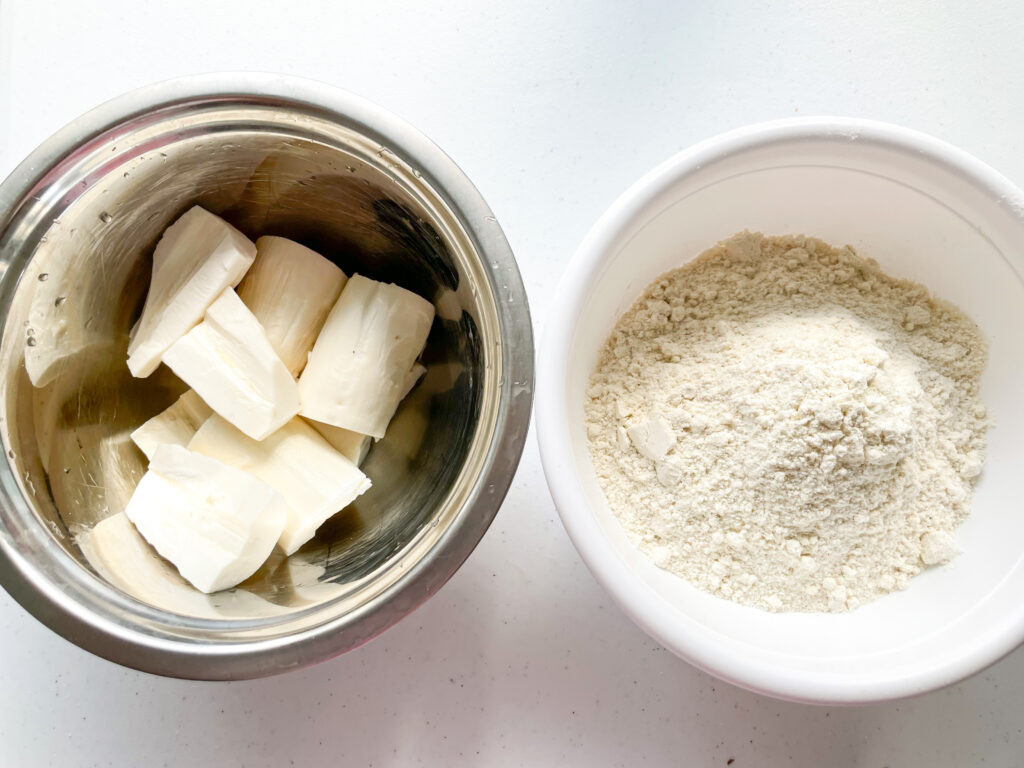
You will need literally two ingredients
- Corn Meal, specifically WHITE CORN MEAL! Please do not use corn flour like Masa Harina. Masa Harina has been treated with lye/ nixtamalized which you cannot ferment. Most Ghanaians abroad use Indian Head white CORN MEAL. You can also purchase cornmeal from African stores. For more details on African stores, please check my FAQ (click here)
- Cassava. Cassava is also known as yuca and can be found in most grocery stores, but certainly most Asian, Latin American, or African stores.
How to Make Banku
These instructions come out to 4-5 banku balls. You can increase the amount if you want to. The full youtube video below outlines the process in depth.
Fermenting
- You will ferment the cornmeal and cassava separately.
- Peel the skin of the cassava and remove the core. If you are not comfortable with a knife, make sure to cut on a cutting board and peel with your hands.
- Place the cassava in a separate bowl and submerge the cassava in filtered water. Make sure that there is enough water that all the cassava is under water. This will also sit at room temperature for 5 days in the same environment as the corn
- In a bowl, mix 3 cups of cornmeal with 2.5 cups of water. You want all the cornmeal to be properly mixed with water to form a very thick paste that when you squeeze on your hand sticks together. Please do not add more water; all you need is enough to hydrate the cornmeal.
- Press the cornmeal flat and pack it into the bowl then cover it with plastic wrap (as in pack the plastic wrap directly on top of the cornmeal and touch the cornmeal dough). This will sit at room temperature for 5 days. Make sure you keep it in a cool, dry area and preferably away from heat or the sun.
Post-Fermentation
- After five days, the corn should smell fermented and sour.
- Remove the cassava from the bowl, wash well and place in a blender with no additional water. Blend the cassava till you get a thick paste.
- For the corn, scoop out any mold that grows on the top. “Mold” is okay, just make sure to get all of it off. Mix the blended cassava and corn together. You can do this in a bowl or add the corn dough to the blender and blend everything together.
- You can split the dough into four or five portions and cook what you want to eat while freezing the rest. I like to freeze mine flat in a ziplock bag.
Cooking
- To cook the banku, you can mix about 1 part dough with enough water in a pot to make a thin porridge. Add in 1/2 tsp of salt for every cup of dough you use.
- Place the pot on the stove at medium heat and mix continuously. As the porridge cooks, the porridge will thicken till it comes together.
- This is where I suggest you watch the video to know how to properly make banku. You will need the end of a wooden spoon for this. The direct twi translation for what you will be doing is “driving” the banku. The idea is to make sure there are no lumps. You will do this for about 5 minutes
- Once you have a ball, poke a few holes into the dough, and about 1/4 cup of water to the pot or enough water to cover the holes NOT submerge the banku. Cover the pot and let the banku cook for about 10 minutes at medium-low heat. This is what will actually cook the banku and will change the texture and colour. If you double or triple the banku dough, let it cook for up to 15 minutes. The banku will go from white to a translucent white and it will become a lot less grainy.
- After, remove the cover and continue to drive the banku for another five minutes till the banku is really nice and smooth.
- At this point, it is ready. Scope with a wet plastic spoon into a bowl to shape. I know some use plastic wrap to shape it but I do not think that is good nor healthy for you.
- You should let it cool down for a bit before eating so you do not burn yourself.
What Can I eat with Banku?
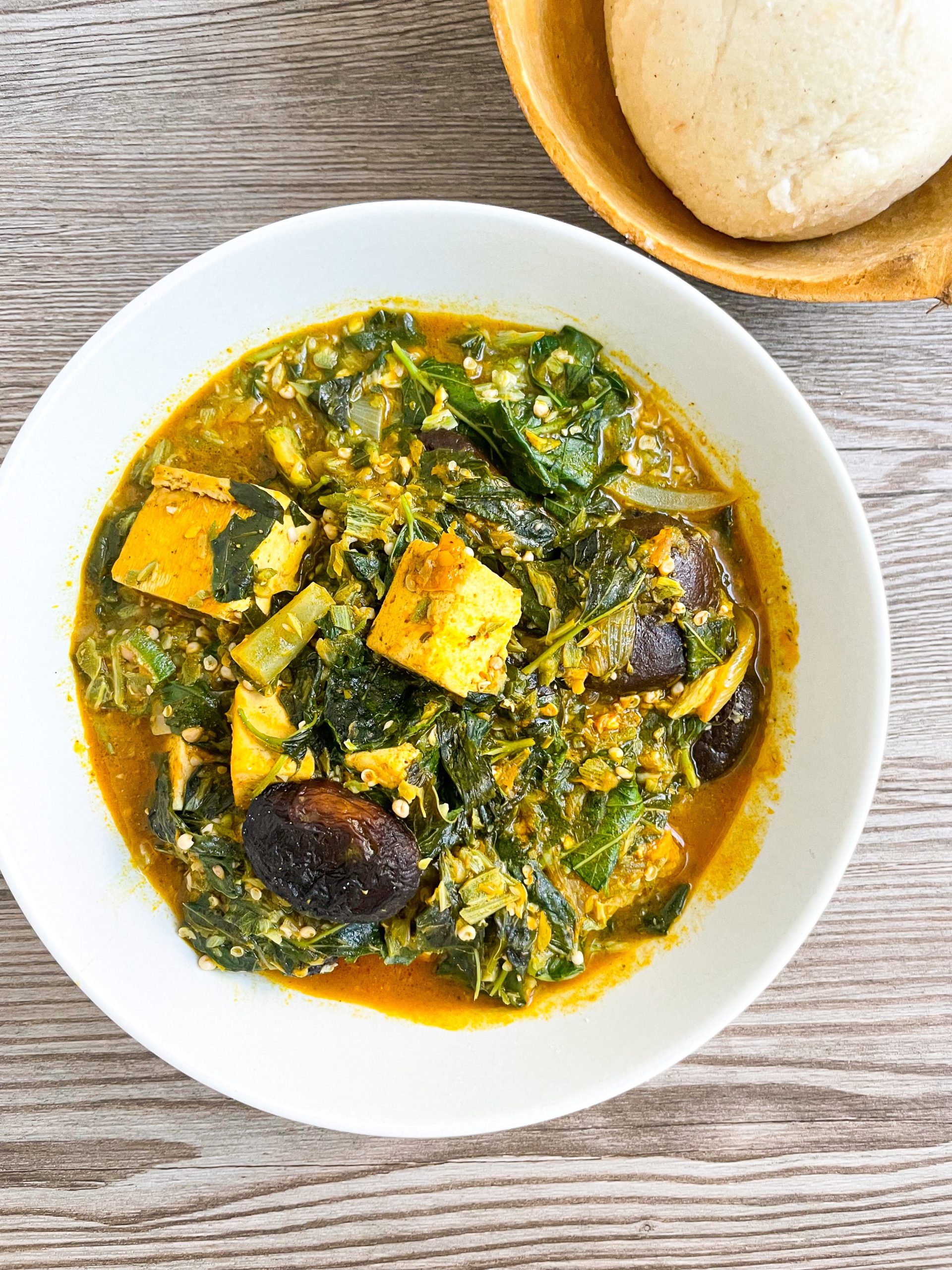
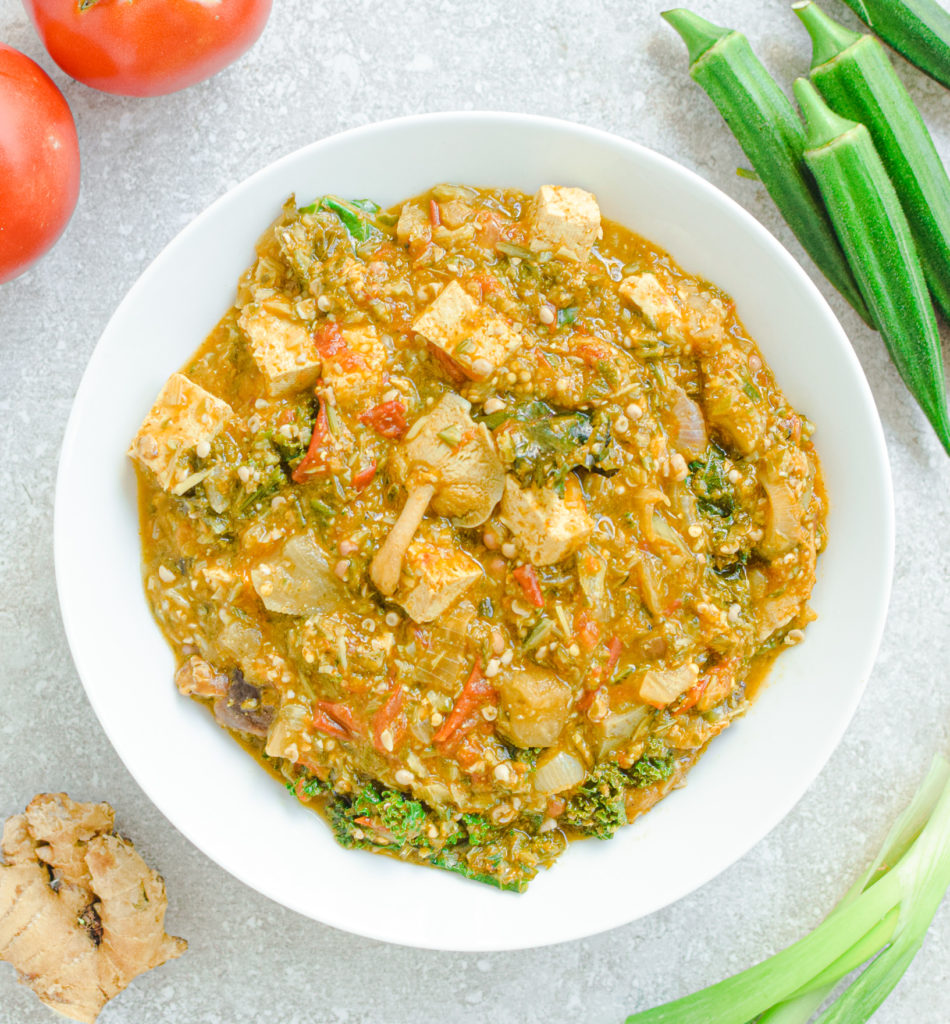

FAQ
- Can I use any other corn? No please use WHITE CORNMEAL. Not the cornmeal used for cornbread (i.e yellow cornmeal) or masa harina
- My corn is moldy, is that bad? It is normal for there to be mold on top of the corn, at the end of the five days, just scoop off the mold. This is why properly hydrating the corn is important because when there is enough water mixed in, the dough will not mold as much. Also making sure that the corn is properly covered with plastic wrap is key
- My cassava is frothing, is this bad? Fermentation induces the release of gas so it is normal to get a few bubbles here and there; however, if the whole container is covered in froth and bubbles, please throw it out.
- Can I store the final mixture in the fridge? Yes, you can. It should be stored in the coldest part of your fridge for a few days. I highly suggest just freezing.
- How long does it last in the fridge? You can freeze for up to 6 months.

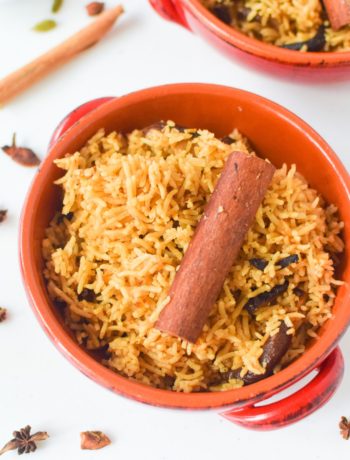
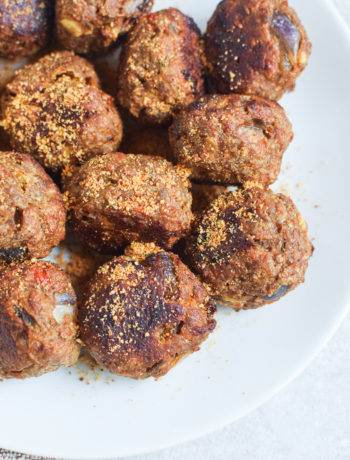
3 Comments
Vegetarian Ademe Detsi - The Canadian African
December 13, 2022 at 2:11 am[…] There are so many options, you can use enjoy it with banku, ewòkplé, or eba. You can check out my banku recipe for more details (click here) […]
Vegan Ghanaian Palm Nut Soup - The Canadian African
December 13, 2022 at 3:11 am[…] can serve it with omutuo, fufu, banku or any grain of […]
Vegan Ghanaian Okra Stew - The Canadian African
December 13, 2022 at 3:38 am[…] What can I eat with the okra stew? In Ghana, okra stew is enjoyed with a fermented corn swallow called banku. But you can literally eat it with anything. I have eaten it with fonio or rice. Find the recipe for banku here (click here) […]